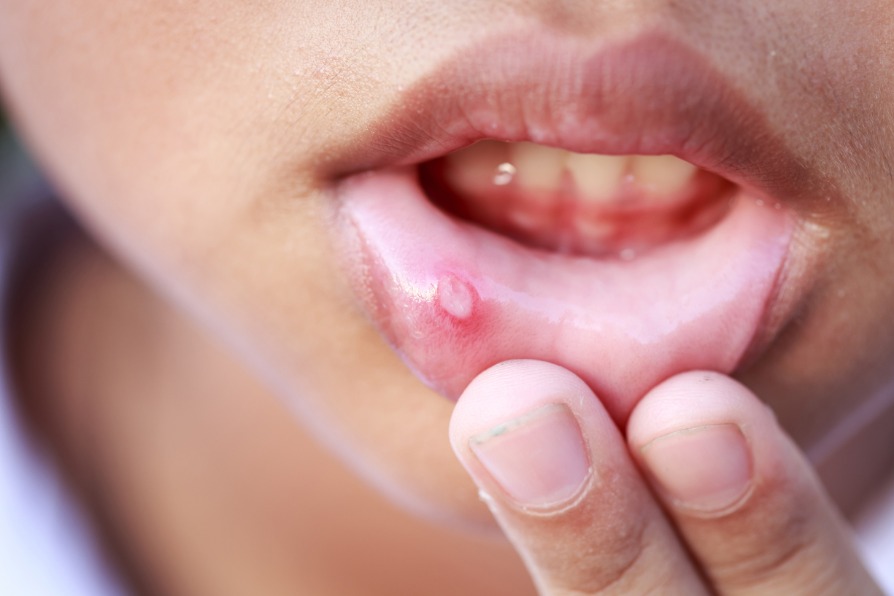
It’s estimated that more than half the population gets canker sores at least occasionally. While the exact cause is unclear, they can be triggered by a variety of factors, including stress, hormonal shifts, food sensitivities, vitamin deficiencies, and more. In addition to being painful, it’s not uncommon for people to call an emergency dentist in Medford because they’ve mistaken their canker sore for oral cancer. In honor of Oral Cancer Awareness Month, this blog explains what canker sores are, how they differ from oral cancer, and the importance of getting regular oral cancer screenings. Learn more below!
What Are Canker Sores?
Canker sores are small, oval-shaped ulcers that often appear on the tongue, inside of the lips or cheeks, or the base of the gums. In most cases, they’re relatively minor and go away on their own within a week or two. In relatively rare and severe cases, you may have a larger canker sore that doesn’t heal for up to six weeks.
Distinguishing a Canker Sore From Oral Cancer
Canker sores differ from oral cancer in the following ways:
- The majority of canker sores go away within 10 – 14 days. Oral cancer lesions don’t go away within that timeframe and persist indefinitely.
- Whereas a canker sore is usually painful, oral cancer may or may not cause pain.
- Canker sores are always flat and usually have a white or yellow center (and turn gray as they’re healing). Oral cancer lesions can be flat or raised and are often white or red.
- While canker sores can cause temporary, momentary pain when you have something acidic like orange juice, they don’t lead to chronic problems with swallowing, speaking, or chewing like oral cancer can.
The Importance of Oral Cancer Screenings
Oral cancer is on the rise, and an estimated 53,000 people in the U.S. are diagnosed each year. However, when it’s found early it has a high survival rate of 85-90%. Fortunately, oral cancer screenings are not only fast, easy, and non-invasive, but they’re also included in every dental checkup.
With that said, if you notice a sore or lesion between checkups that doesn’t heal within 10-14 days, call an emergency dentist to schedule a visit. They’ll visually examine the area (as well as the other soft tissues in your mouth) and may also gently palpate your neck and jaws. Depending on their findings, they may ask you to return to their office in 10 days or refer you to a specialist for further evaluation.
By knowing about the differences between canker sores and oral cancer (and scheduling a visit with a dentist if you’re ever in doubt), you’ll save yourself a lot of worry and have the peace of mind that comes from a proper diagnosis.
About the Author
Dr. Hobin Kang is a general and emergency dentist in Medford who performs an oral cancer screening for his patients at every visit. With a thorough understanding of oral pathology, he’s able to diagnose common conditions such as canker sores while also knowing when further evaluation is needed. If you’d like to know more about oral cancer or have any questions, he can be reached via his website.

